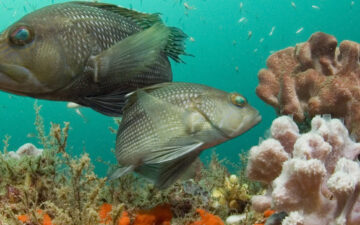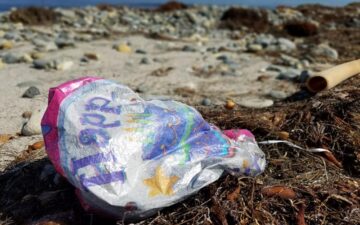By Jerry McCormick-Ray and G. Carleton Ray, TOF Board of Advisor Members
There is an anxiety about the oceans that concerns us all. The icons that we wish to protect are living in an ocean undergoing change. Climate change, ocean warming, acidification, anoxia, exotic species, and massive spills and contaminants increasingly expose sea life to physiological stresses. And in a system as big as the ocean, and a complexity more daunting than easily conceived, marine conservation confronts two contrasting ethics: the desire to conserve what lives in the ocean, and the right to use the ocean and its resources for private and public gain. Preserving the ocean’s biological richness in this cultural and philosophical divide requires major shifts in long-standing beliefs and habits, reinforced by agreed-upon, defensible, and enforceable legal constraints.
Today’s dominant paradigm for species and ecosystem conservation rests on assumptions that the oceans and adjacent coasts are resilient, that MPAs are healthy, and that restoration of valued species will occur through regulated use and protection. Yet, ecosystem dynamics challenge those assumptions, requiring a new paradigm shift toward ecosystem-based management (EBM) and marine spatial planning (MSP). However, rising demands for ocean resources, ocean space, and the growing global need for food, wealth, trade, energy, minerals, and national security focus attention on the capacity of the ocean system to sustain and endure its characteristic biological richness, its biogeography and resiliency in a 21st century of change. Resolution is only possible through a systems approach that places conservation at the forefront of planning for protection and use together, and with cooperation among stakeholders. Integrated use of well-established and projected conservation tools such as MPAs, regulated use, and MSP only provide starting points.
A regional framework for marine conservation in a system’s context is illustrated in Marine Conservation: Science, Policy, and Management through on-going case studies that target valued species, critical habitats, land-sea interactions, governance, and human activities. In particular, the human community of the Isles of Scilly, located off England’s Lands End, values the biological richness of the entire island system. Scillionians balance economic needs with sustaining biodiversity, support comprehensive MPA coverage across the Isles, and stay alert to signs of environmental change. In Argentina’s Patagonian Sea, iconic, wide-ranging marine mammals and sea birds depend on land and sea, but are only partially protected on small, isolated, terrestrial MPAs and thus remain vulnerable to increasing conflicts with fisheries, oil and gas development, and cargo traffic. A “large ocean reserve” (LOR) could protect them from potential conflict. For the degraded Chesapeake Bay, a whole-watershed, multi-government program offers a path for restoration of the Bay and its important role as an economic engine for the entire region. Four other examples encompass regional system approaches: the indigenous Haida Nation and Canada have agreed to cooperative, two-nation resource management of a large land-sea protected area in Haida Gwaii (formerly Queen Charlotte Islands). The Bahamas archipelago that depends on a tourism economy faces diverse conservation issues and is attempting to address these issues comprehensively and through legislation. In the Bering Sea (Alaska), marine mammals and the native subsistence hunters that use them are confronted by a scenario of regional climate change and sea-ice loss that can only be resolved internationally. For southern coastal South Africa, a Biosphere Reserve is attempting to innovate marine conservation in a systems framework.
Marine conservation is thus about addressing ocean change, maintaining ecosystem resiliency, and building collaboration. A growing list of threatened marine species and habitats make clear that the ocean’s biodiversity, its iconic species and its productivity, face the possibility of irreversible change. As global and regional change reduces resiliency of formerly healthy oceans, recovery will be difficult. Addressing such change requires an educated public that understands the relationship of their choices to themselves, their long-term self-interest, and to society. A new conservation paradigm is needed to integrate coasts, seas, and human uses of whole ecosystems and whole regions, facilitated by public understanding of the risks and need for conflict reduction through coastal/ocean planning, management, and conservation. A new paradigm should incorporate ecosystem “resiliency”, that is a capacity to “absorb disturbance and reorganize so as to retain essentially the same function, structure, and feedbacks” (Walker and Salt, 2006). Adding resiliency thinking to a systemic conservation vision is required to anticipate ecosystem response to perturbations before a “tipping point” is reached, beyond which recovery is not possible.
References: GC Ray and MG McCormick-Ray (2014) Marine Conservation: Science, Policy, and Management Wiley and Blackwell, UK.
Walker B, Salt D (2006) Resilience Thinking. Island Press, Washington, D.C.







